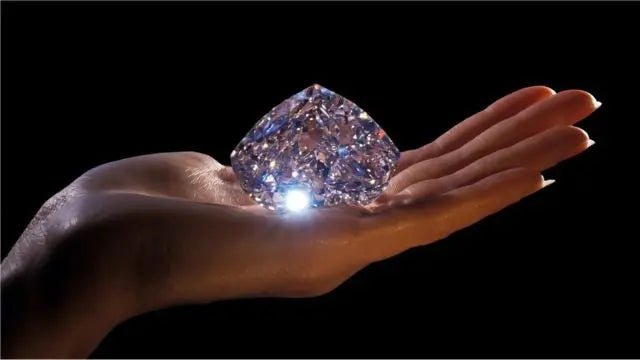
Natural Diamonds vs. Synthetic Diamonds: An Ethical and Ecological Perspective
Share
Diamonds, symbols of eternity and purity, have long sparked ethical and environmental concerns. The emergence of synthetic diamonds has introduced new aspects to consider in this debate, balancing ecological and ethical concerns associated with natural diamond mining.
Natural Diamonds: Profound Environmental Impact
Natural diamonds are extracted from mines worldwide, a process often linked to devastating environmental consequences. Mining can lead to the degradation of local ecosystems, disruption of water and soil, and even health issues for workers exposed to hazardous conditions. Additionally, diamond-related conflicts, known as "blood diamonds," raise major ethical concerns as some diamonds contribute to funding armed conflicts.
Synthetic Diamonds: An Ethical and Ecological Alternative?
Synthetic diamonds, created in laboratories, have gained popularity due to their more controlled manufacturing process. Mining is not necessary, significantly reducing the environmental impact. However, it's crucial to note that synthetic diamond production is not without an ecological footprint. The manufacturing processes require energy and resources, emphasizing the need for a responsible approach in producing these artificial gems.
Ethical Choices: Rare or Reproduced?
The choice between a natural diamond and a synthetic diamond often depends on individual values. Some prefer the rarity and uniqueness of natural diamonds, while others consider synthetic diamonds a more ethical option, contributing to reducing the demand for traditional mining.
Conclusion: Seeking a Balance
Ultimately, the question of natural diamonds versus synthetic diamonds reflects a delicate balance between ethical, environmental, and personal considerations. While synthetic diamonds offer a more environmentally friendly alternative, it is crucial to ensure that manufacturing practices are ethical. Consumers are increasingly aware of these considerations, underscoring the growing importance of choosing jewelry that reflects not only beauty but also values of sustainability and responsibility.
Natural Diamonds: Profound Environmental Impact
Natural diamonds are extracted from mines worldwide, a process often linked to devastating environmental consequences. Mining can lead to the degradation of local ecosystems, disruption of water and soil, and even health issues for workers exposed to hazardous conditions. Additionally, diamond-related conflicts, known as "blood diamonds," raise major ethical concerns as some diamonds contribute to funding armed conflicts.
Synthetic Diamonds: An Ethical and Ecological Alternative?
Synthetic diamonds, created in laboratories, have gained popularity due to their more controlled manufacturing process. Mining is not necessary, significantly reducing the environmental impact. However, it's crucial to note that synthetic diamond production is not without an ecological footprint. The manufacturing processes require energy and resources, emphasizing the need for a responsible approach in producing these artificial gems.
Ethical Choices: Rare or Reproduced?
The choice between a natural diamond and a synthetic diamond often depends on individual values. Some prefer the rarity and uniqueness of natural diamonds, while others consider synthetic diamonds a more ethical option, contributing to reducing the demand for traditional mining.
Conclusion: Seeking a Balance
Ultimately, the question of natural diamonds versus synthetic diamonds reflects a delicate balance between ethical, environmental, and personal considerations. While synthetic diamonds offer a more environmentally friendly alternative, it is crucial to ensure that manufacturing practices are ethical. Consumers are increasingly aware of these considerations, underscoring the growing importance of choosing jewelry that reflects not only beauty but also values of sustainability and responsibility.
